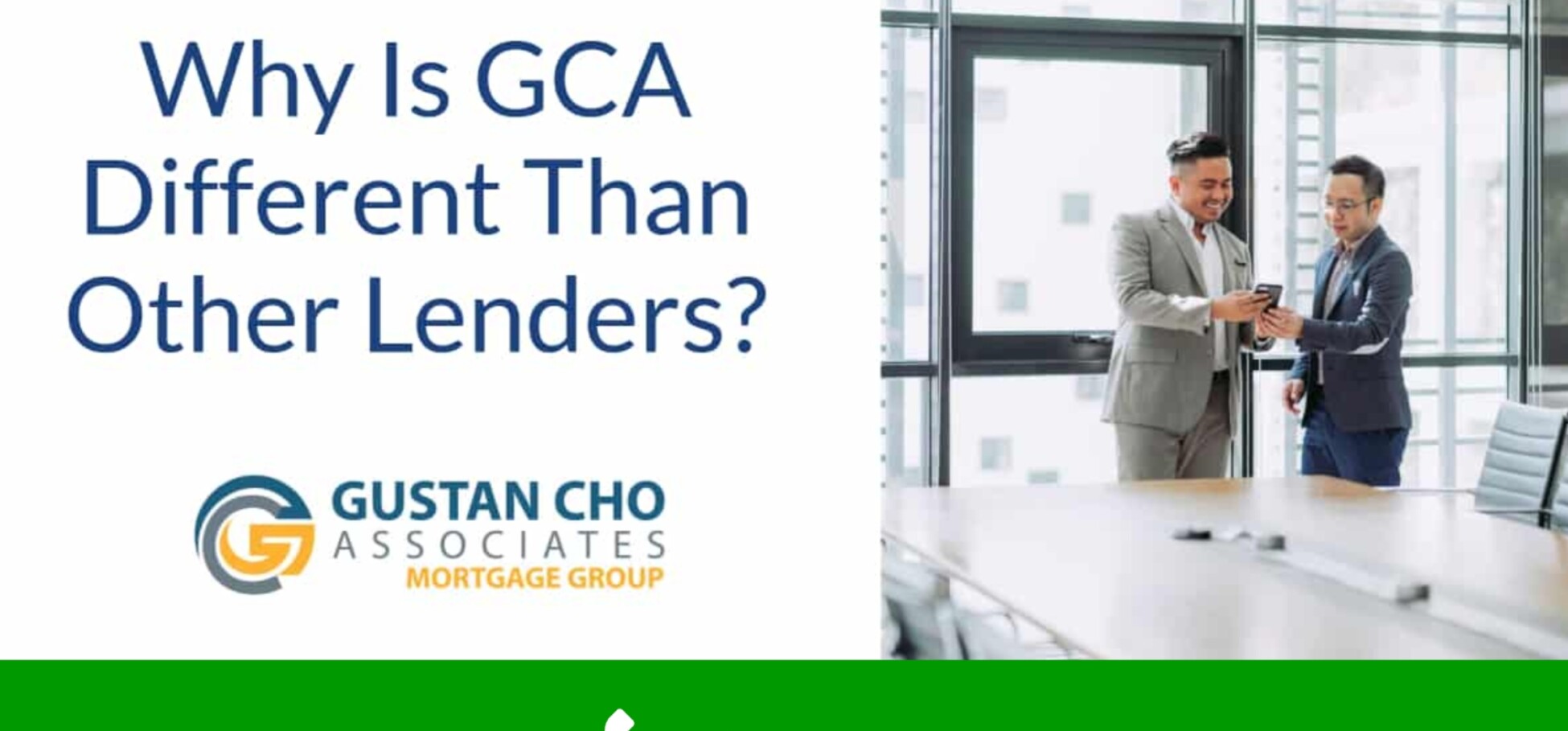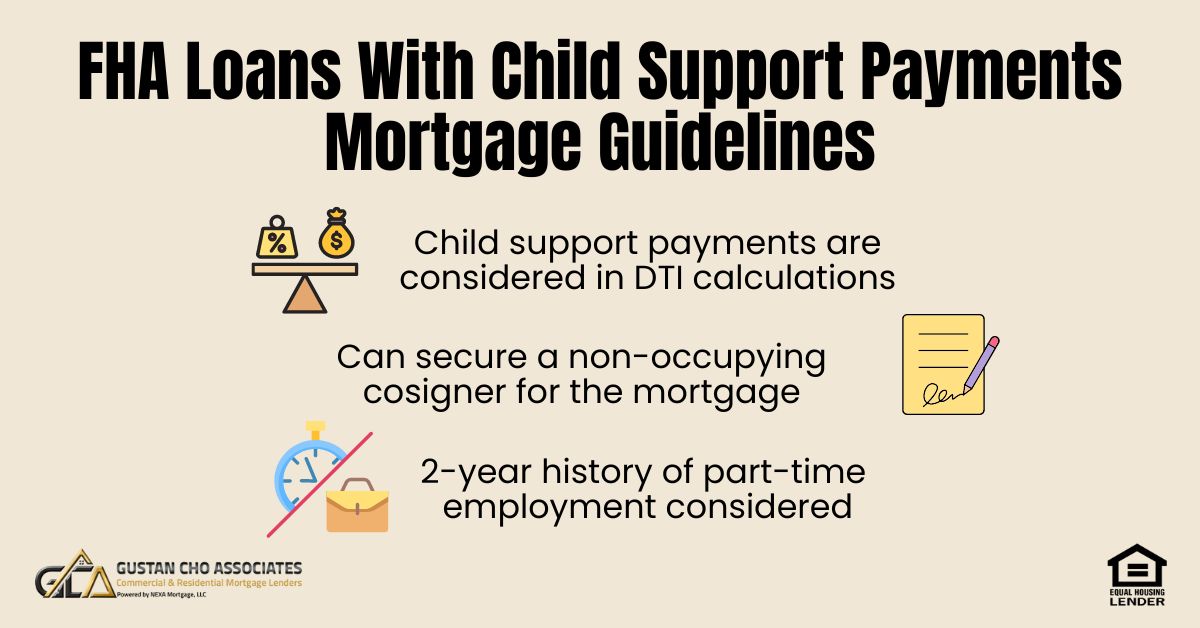
Randy
Loan OfficerForum Replies Created
-
A cash-out refinance using DSCR (Debt Service Coverage Ratio) loans is a financing option that allows property investors to refinance an existing loan, take out equity in the form of cash, and qualify based on the income generated by the property rather than personal income. This type of loan is particularly beneficial for real estate investors with multiple properties or those who may not have traditional income documentation.
What is a Cash-Out Refinance?
A cash-out refinance involves replacing an existing mortgage with a new one that has a higher loan amount. The difference between the new loan amount and the old loan balance is paid out to the borrower in cash. This can be used for various purposes such as property improvements, paying off other debts, or investing in additional properties.
What is a DSCR Loan?
A DSCR loan is a type of loan where the qualification is based on the income generated by the property, typically rental income, rather than the borrower’s personal income. The Debt Service Coverage Ratio is a measure used by lenders to determine the property’s ability to cover its debt obligations.
DSCR Calculation:
DSCR=Total Debt ServiceNet Operating Income (NOI)
- Net Operating Income (NOI): The income generated from the property after operating expenses.
- Total Debt Service: The total mortgage payments (including principal and interest) on the property.
A DSCR of 1.0 indicates that the property’s income is sufficient to cover its debt payments. Lenders typically look for a DSCR above 1.2 to 1.25 for approval, which means the property generates 20-25% more income than the debt obligations.
Benefits of Cash-Out Refinance with DSCR Loans
-
Access to Equity:
- Allows investors to tap into the equity of their property to fund other investments or needs.
-
Qualification Based on Property Income:
- Ideal for investors who may not have traditional income documentation or have significant write-offs that lower taxable income.
-
Leverage Investment Properties:
- Enables investors to use the rental income from properties to qualify, potentially allowing for the acquisition of more properties.
-
Potential for Better Terms:
- With a good DSCR, investors might secure better loan terms such as lower interest rates or higher loan amounts.
Key Requirements and Considerations
-
Minimum DSCR:
- Lenders typically require a minimum DSCR of 1.2 to 1.25. Higher DSCR indicates better financial health of the property and may qualify for better terms.
-
Property Valuation:
- An appraisal will be required to determine the current market value of the property and its rental income potential.
-
Loan-to-Value (LTV) Ratio:
- Lenders may have maximum LTV ratios, often around 70-75%. This means the loan amount cannot exceed 70-75% of the property’s appraised value.
-
Documentation:
- While personal income documentation may not be required, lenders will need detailed financials on the property, including rent rolls, lease agreements, and operating statements.
-
Interest Rates and Fees:
- DSCR loans might have higher interest rates compared to traditional loans due to the perceived higher risk. Be aware of closing costs and other fees associated with the refinance.
-
Reserves:
- Lenders might require borrowers to have cash reserves to cover several months of mortgage payments, typically ranging from 3 to 12 months.
Steps to Obtain a Cash-Out Refinance DSCR Loan
-
Evaluate Your Property:
- Determine the current value and income-generating capacity of your property.
- Calculate your DSCR to understand if it meets lender requirements.
-
Research Lenders:
- Look for lenders who specialize in DSCR loans for real estate investors.
- Compare interest rates, fees, and terms.
-
Prepare Documentation:
- Gather necessary property financials, including rent rolls, lease agreements, operating statements, and property appraisal.
-
Apply for the Loan:
- Submit your application with the chosen lender.
- Provide all required documentation for the lender to evaluate your DSCR and property value.
-
Underwriting and Approval:
- The lender will underwrite the loan, assessing the property’s income and financial health.
- Upon approval, the lender will provide the loan terms and conditions.
-
Closing:
- Review and sign the loan documents.
- Pay any applicable closing costs.
- Receive the cash-out proceeds from the refinance.
A cash-out refinance using a DSCR loan is an excellent option for property investors looking to leverage the income generated by their investment properties to access additional funds. By focusing on the property’s income rather than personal income, DSCR loans provide flexibility for investors with complex financial situations. Understanding the requirements and steps involved can help you make the most of this refinancing option and potentially grow your real estate portfolio.
-
This reply was modified 5 months ago by
 Sapna Sharma.
Sapna Sharma.
-
FHA and VA loans are the only two mortgage loan programs that have a fast-track refinance loan program where no appraisal, and no income docs are required. The only thing required is that you have been timely making your mortgage payments on time. An FHA Streamline Refinance is a mortgage refinancing option available to homeowners with existing FHA loans. It is designed to make the refinancing process quicker and easier, with less documentation and underwriting requirements compared to a traditional refinance. Here’s a detailed guide on what an FHA Streamline Refinance is and how it works:
Key Features of FHA Streamline Refinance
-
Reduced Documentation:
- Less paperwork is required compared to a traditional refinance.
- No income verification, no employment verification, and often no credit check.
-
No Appraisal Required:
- Typically, an appraisal of the property is not needed.
- The original purchase price is used to calculate the loan amount.
-
Lower Costs:
- Lower upfront costs due to reduced documentation and appraisal requirements.
- Closing costs can be rolled into the loan amount.
-
Faster Process:
- Streamlined procedures result in a quicker refinance process.
Eligibility Requirements
-
Current FHA Loan:
- The homeowner must already have an FHA-insured mortgage.
-
Good Payment History:
- The borrower must be current on their mortgage payments.
- No more than one late payment in the past 12 months, and no late payments in the last 6 months.
-
Net Tangible Benefit:
- The refinance must result in a tangible benefit to the borrower, such as a lower monthly payment or a switch from an adjustable-rate mortgage (ARM) to a fixed-rate mortgage.
- The FHA requires that the refinance reduces the borrower’s monthly principal and interest payments by at least 5%.
-
Seasoning Requirement:
- The existing loan must be at least 210 days old, with at least six consecutive monthly payments made.
Types of FHA Streamline Refinance
-
Credit Qualifying Streamline:
- Requires a credit check and income verification.
- Typically used if the borrower wants to remove a co-borrower from the loan.
-
Non-Credit Qualifying Streamline:
- No credit check or income verification required.
- Most common type of FHA Streamline Refinance.
Steps to Apply for an FHA Streamline Refinance
-
Gather Documentation:
- While minimal, some documentation will still be required, such as proof of current FHA loan, proof of timely payments, and identification.
-
Contact Lenders:
- Reach out to several lenders to compare rates and terms.
- Even though the FHA sets certain guidelines, lenders can have their own requirements and offer different rates.
-
Complete Application:
- Fill out the refinance application with the chosen lender.
- Provide necessary documentation as requested by the lender.
-
Underwriting and Approval:
- The lender will process the application.
- Since it’s a streamlined process, it should be quicker than a standard refinance.
-
Closing:
- Review and sign the loan documents.
- Pay any applicable closing costs, though these can often be rolled into the new loan amount.
Benefits of FHA Streamline Refinance
-
Lower Monthly Payments:
- Refinancing can reduce monthly mortgage payments, freeing up cash for other expenses.
-
Lower Interest Rates:
- Taking advantage of lower interest rates can save money over the life of the loan.
-
No Appraisal Risk:
- The absence of an appraisal requirement means there’s no risk of the loan being denied due to a low property value.
Considerations and Drawbacks
-
Mortgage Insurance:
- FHA loans require both an upfront mortgage insurance premium (UFMIP) and monthly mortgage insurance premiums (MIP).
- These costs must be factored into the refinancing decision.
-
Loan Term:
- Extending the loan term can result in paying more interest over the life of the loan, even if the monthly payment is lower.
-
Closing Costs:
- While closing costs can be rolled into the loan, it increases the loan balance.
An FHA Streamline Refinance is a great option for homeowners with an existing FHA loan looking to reduce their monthly payments or switch to a fixed-rate mortgage. With less documentation, no appraisal, and a faster process, it provides a streamlined way to take advantage of lower interest rates and other favorable loan terms. Always compare offers from multiple lenders and consider all costs involved to ensure it’s the best financial move for your situation. Most FHA streamline refinance loans close in two weeks and the title company agent can come to your home to close on your loan.
-
-
Many people do not realize that computer technology is a new field and they are not the only ones who are not computer literate on basic computer skills. Basic computer skills can be learned and mastered online. Many of us on GCA FORUMS are out to help our fellow members on coaching and teaching basic computer skills online at the convenience of your home. Learning basic computer skills as a beginner can seem daunting, but there are many online resources available that can help you get started. Here are some tips and resources to help you learn basic computer skills online:
- Online tutorials and courses.
- GCFLearnFree.org: This website offers a wide range of free online tutorials covering computer basics, internet basics, Microsoft Office, and more.
- Udemy: Udemy has a variety of affordable online courses on computer basics, including courses specifically designed for beginners.
- YouTube: YouTube is a goldmine of free tutorial videos on various computer topics. Search for channels like “GCFLearnFree.org” or “Microsoft Office Tutorials” for beginner-friendly content.
- Interactive lessons.
- TypingClub: This website offers interactive lessons to learn typing skills, which is an essential computer skill.
- Microsoft Office Training: Microsoft provides free online training for its Office suite, including Word, Excel, PowerPoint, and more.
- Online communities and forums.
- Reddit’s r/computers or r/techsupport: These subreddits are great for asking questions and getting advice from experienced users.
- Quora: Search for computer-related topics on Quora, and you’ll find a wealth of knowledge from experts and enthusiasts.
- Local library or community centers.
- Many libraries and community centers offer free computer classes or workshops for beginners. Check with your local organizations for available programs.
- Books and e-books.
- Look for beginner-friendly books or e-books on computer basics, such as “Computer Basics Absolute Beginner’s Guide” or “Computers for Seniors for Dummies.”
When learning online, start with the basics like understanding computer hardware, using a mouse and keyboard, navigating the operating system (e.g., Windows or macOS), and familiarizing yourself with common software applications like web browsers, word processors, and email clients. Take your time, practice regularly, and don’t hesitate to ask questions or seek additional resources when you need them. You do not have to try to learn basic computer skills online overnight. Practice is a must. You will make mistakes and that is the only way you will learn basic computer skills online. If you have any questions or are stumbling into a barrier, just ask and a member or moderator of GCA FORUMS will promptly guide you and get you all squared away where it makes sense for you.
https://www.youtube.com/watch?v=DwsKeoXOa9I
-
This reply was modified 1 year ago by
 Randy.
Randy.
-
This reply was modified 8 months, 2 weeks ago by
 Sapna Sharma.
Sapna Sharma.
-
As of today, here are the current average mortgage rates:
- 30-Year Fixed Mortgage Rate: 7.14% .
- 15-Year Fixed Mortgage Rate: 6.73% .
- 5/1 Adjustable Rate Mortgage (ARM): 6.58% .
These rates can vary based on your personal financial situation, the lender, the amount of the loan, and other factors. It’s advisable to shop around and compare rates from different lenders to find the best option for your needs.
-
VA home loans are mortgage loans guaranteed by the U.S. Department of Veterans Affairs (VA) and are designed to help veterans, active-duty service members, and eligible surviving spouses become homeowners. Here’s a comprehensive overview of VA home loans:
Key Features of VA Home Loans
-
No Down Payment Required:
- One of the most significant benefits is that VA loans often do not require a down payment, making homeownership more accessible.
-
No Private Mortgage Insurance (PMI):
- Unlike conventional loans, VA loans do not require private mortgage insurance, which can save borrowers money over the life of the loan.
-
Competitive Interest Rates:
- VA loans typically offer lower interest rates compared to conventional loans, which can result in lower monthly payments.
-
Flexible Credit Requirements:
- While lenders still look at credit history, VA loans tend to have more lenient credit requirements compared to conventional loans.
-
Limits on Closing Costs:
- The VA limits the amount of closing costs that veterans can be charged, and in some cases, the seller may pay these costs.
-
Assistance to Avoid Foreclosure:
- The VA provides financial counseling and other resources to help borrowers avoid foreclosure.
Eligibility Requirements
-
Service Requirements:
- Veterans: Generally, veterans must have served 90 consecutive days of active service during wartime, 181 days during peacetime, or six years in the National Guard or Reserves.
- Active-Duty Service Members: Must be currently serving in the military with a minimum of 90 days of continuous service.
- Surviving Spouses: Eligible if their spouse died in service or from a service-connected disability and they have not remarried (unless after age 57 and after December 16, 2003).
-
Certificate of Eligibility (COE):
- Borrowers must obtain a Certificate of Eligibility from the VA to prove their eligibility. This can be obtained through the VA’s eBenefits portal, by mail, or through a lender.
Types of VA Home Loans
-
Purchase Loans:
- These loans help veterans buy a home at a competitive interest rate often without requiring a down payment or PMI.
-
Cash-Out Refinance Loans:
- Allows veterans to take cash out of their home equity to pay off debt, fund education, or make home improvements.
-
Interest Rate Reduction Refinance Loan (IRRRL):
- Also known as a VA Streamline Refinance, it helps veterans obtain a lower interest rate by refinancing an existing VA loan.
-
Native American Direct Loan (NADL):
- Helps eligible Native American veterans finance the purchase, construction, or improvement of homes on Federal Trust Land.
-
Adapted Housing Grants:
- For veterans with permanent and total service-connected disabilities to help purchase or modify homes for improved accessibility.
Steps to Apply for a VA Home Loan
-
Obtain a Certificate of Eligibility (COE):
- Verify eligibility and obtain your COE from the VA.
-
Find a VA-Approved Lender:
- Work with a lender that participates in the VA loan program.
-
Get Pre-Approved:
- Get pre-approved for a loan to understand how much you can afford and to show sellers you are a serious buyer.
-
Find a Home:
- Choose a home that meets VA property requirements.
-
Complete the Loan Application:
- Work with your lender to complete the loan application process, including a VA appraisal and underwriting.
-
Close on the Home:
- Once the loan is approved, you’ll close on the home and move in.
https://non-qmmortgagebrokers.com/va-overlays/
non-qmmortgagebrokers.com
VA Overlays Versus Agency Guidelines on VA Home Loans
VA overlays are additional mortgage guidelines and requirements by private lenders that surpass the minimum VA agency guidelines on VA loans.
-
-
A reverse mortgage is a financial product designed for senior homeowners, typically aged 62 and older, allowing them to convert part of the equity in their home into cash. Here’s a detailed overview:
How Reverse Mortgages Work
-
Eligibility and Requirements:
- Age Requirement: The homeowner must be at least 62 years old.
- Primary Residence: The home must be the borrower’s primary residence.
- Equity: There should be significant equity in the home.
- Maintenance and Taxes: The homeowner must continue to pay property taxes, insurance, and maintain the home.
-
Loan Mechanism:
- Instead of making monthly mortgage payments, the homeowner receives payments from the lender. These payments can be in the form of a lump sum, monthly installments, a line of credit, or a combination of these options.
- The loan is repaid when the homeowner sells the home, moves out permanently, or passes away. At that point, the proceeds from the home sale go towards repaying the loan, interest, and fees. Any remaining equity belongs to the homeowner or their heirs.
Types of Reverse Mortgages
-
Home Equity Conversion Mortgage (HECM):
- The most common type of reverse mortgage, insured by the Federal Housing Administration (FHA).
- It offers various payout options including fixed monthly payments, a line of credit, or a combination of both.
- Subject to FHA lending limits and requires counseling from a HUD-approved reverse mortgage counselor.
-
Proprietary Reverse Mortgage:
- Private loans not insured by the government, typically for homeowners with higher-value homes.
- May offer larger loan amounts than HECMs due to the absence of FHA lending limits.
-
Single-Purpose Reverse Mortgage:
- Offered by some state and local government agencies and non-profit organizations.
- Designed for specific purposes such as home repairs, property taxes, or improvements.
- Typically have lower costs but are not available everywhere.
Benefits of a Reverse Mortgage
- Supplement Retirement Income: Provides additional income for retirees who may have limited savings or fixed income.
- No Monthly Payments: Borrowers do not make monthly mortgage payments; instead, they receive payments.
- Flexibility: Various payout options to suit individual needs.
Drawbacks of a Reverse Mortgage
- Accumulating Interest: Interest accrues on the loan balance over time, which can reduce the amount of equity left in the home.
- Fees and Costs: Reverse mortgages can have high upfront costs, including origination fees, mortgage insurance premiums, and closing costs.
- Impact on Heirs: The home may need to be sold to repay the loan, which can affect heirs’ inheritance.
Important Considerations
- Counseling Requirement: For HECMs, HUD requires that borrowers undergo counseling from a HUD-approved reverse mortgage counselor to ensure they understand the implications of the loan.
- Repayment Triggers: The loan becomes due if the homeowner fails to live in the home as their primary residence, neglects to pay property taxes or insurance, or does not maintain the property.
https://www.gcamortgage.com/reverse-mortgage-loans/
-
This reply was modified 7 months, 3 weeks ago by
 Sapna Sharma.
Sapna Sharma.
-
-
Randy
MemberMarch 16, 2024 at 2:11 pm in reply to: How Do Lenders Qualify Child Support Income for Mortgage?Final divorce decree, legal separation agreement, or court order and proof of receipt of child support payment for the past 3 months. In the FHA Handbook 4000.1 it states that, for child support used as income, the mortgagee must obtain a fully executed copy of the borrower’s final divorce decree, legal separation agreement, court order, or voluntary payment agreement with documented receipt. When using a final divorce decree, legal separation agreement or court order, the mortgagee must obtain evidence of receipt using deposits on bank statements, canceled checks, or documentation from the child support agency for the most recent three months that supports the amount used in qualifying. The mortgagee must document the voluntary payment agreement with 12 months of canceled checks, deposit slips, or tax returns. The mortgagee must provide evidence that the claimed income will continue for at least three years. The mortgagee may use the front and pertinent pages of the divorce decree/settlement agreement and/or court order showing the financial details.
https://gustancho.com/fha-loans-with-child-support-payments/
gustancho.com
FHA Loans With Child Support Payments Mortgage Guidelines
FHA Loans With Child Support Payments: Child Support Payments can be used as income as long as they continue for 3 years on FHA Loans.
-
My wife and I stopped by Lucky Chen Chinese Restaurant in Paddock Lake, Wisconsin. We stopped by Tuesday but they were closed. We then went there Thursday and had lunch special carry out. Delicious and very clean. We visited Lucky Chen Chinese Restaurant at 11 am once they just opened. Great people. Very clean. And very delicious.
-
Randy
MemberMarch 16, 2024 at 5:17 am in reply to: What is a P and L Statement Mortgage Loan For Self-Employed BorrowersA Profit and Loss (P&L) statement for self-employed mortgage borrowers works similarly to a standard P&L statement used in business accounting. It provides a snapshot of the borrower’s income, expenses, and net profit over a specific period, typically one year. Lenders often require self-employed individuals to submit a P&L statement along with other financial documents when applying for a mortgage.
Here’s how it generally works:
-
Income: The P&L statement starts by listing the borrower’s total income from self-employment. This may include revenue from services rendered, sales of goods, or any other sources of income related to the borrower’s business activities.
-
Expenses: Next, the statement outlines the various expenses incurred in running the business. This could include costs such as materials, utilities, rent, employee wages, insurance, marketing expenses, travel expenses, etc. It’s essential to include all legitimate business expenses to accurately reflect the financial health of the business.
-
Calculating Net Profit or Loss: After listing all income and expenses, the P&L statement calculates the net profit or loss for the period. This is done by subtracting total expenses from total income. If the result is positive, it indicates a net profit, while a negative result indicates a net loss.
-
Adjustments: Sometimes, lenders may require adjustments to the P&L statement to account for non-recurring expenses, depreciation, or other factors that might affect the borrower’s income stability. These adjustments help provide a clearer picture of the borrower’s financial situation.
-
Accuracy and Documentation: It’s crucial for self-employed borrowers to ensure the accuracy of their P&L statements. Lenders may request supporting documentation such as bank statements, invoices, tax returns, and other financial records to verify the information provided in the statement.
-
Impact on Mortgage Approval: Lenders use the P&L statement, along with other financial documents, to assess the borrower’s income stability and ability to repay the mortgage. A strong, consistent income history demonstrated through the P&L statement can strengthen the borrower’s mortgage application.
Overall, the P&L statement for self-employed mortgage borrowers serves as a vital financial document that helps lenders evaluate the borrower’s income and financial stability, ultimately influencing the mortgage approval process.
-




